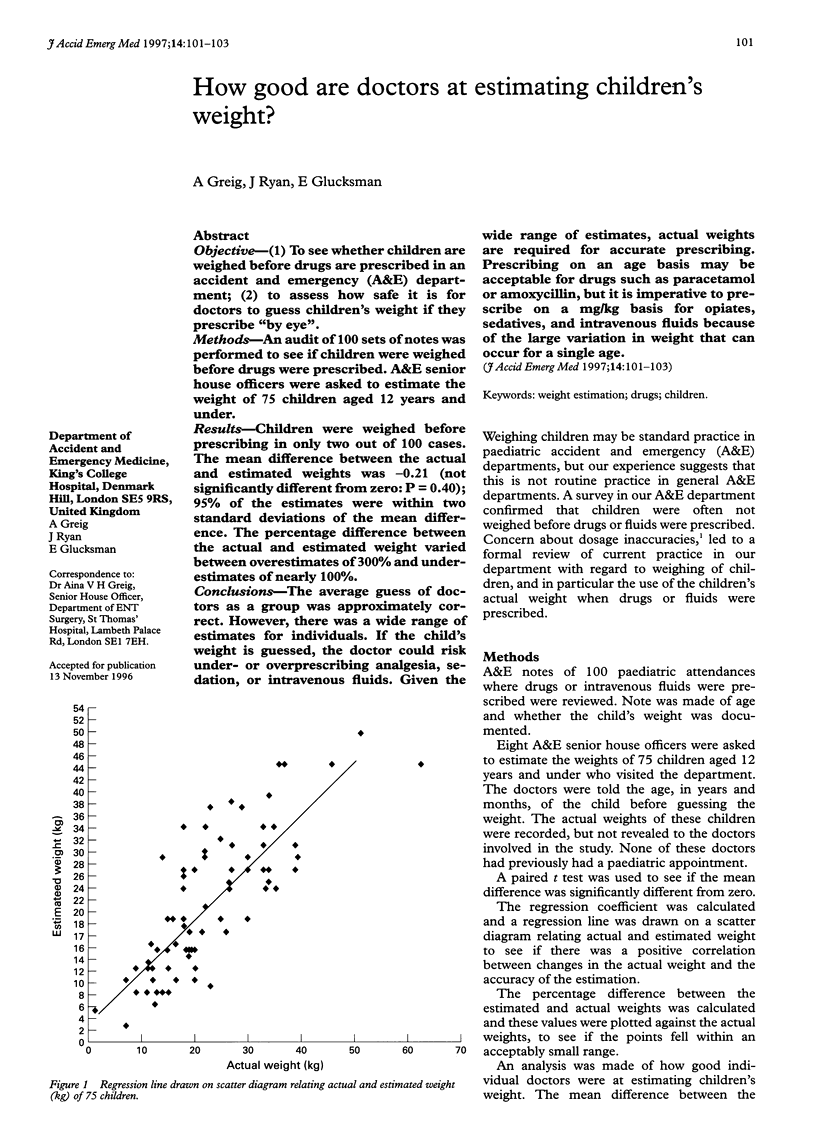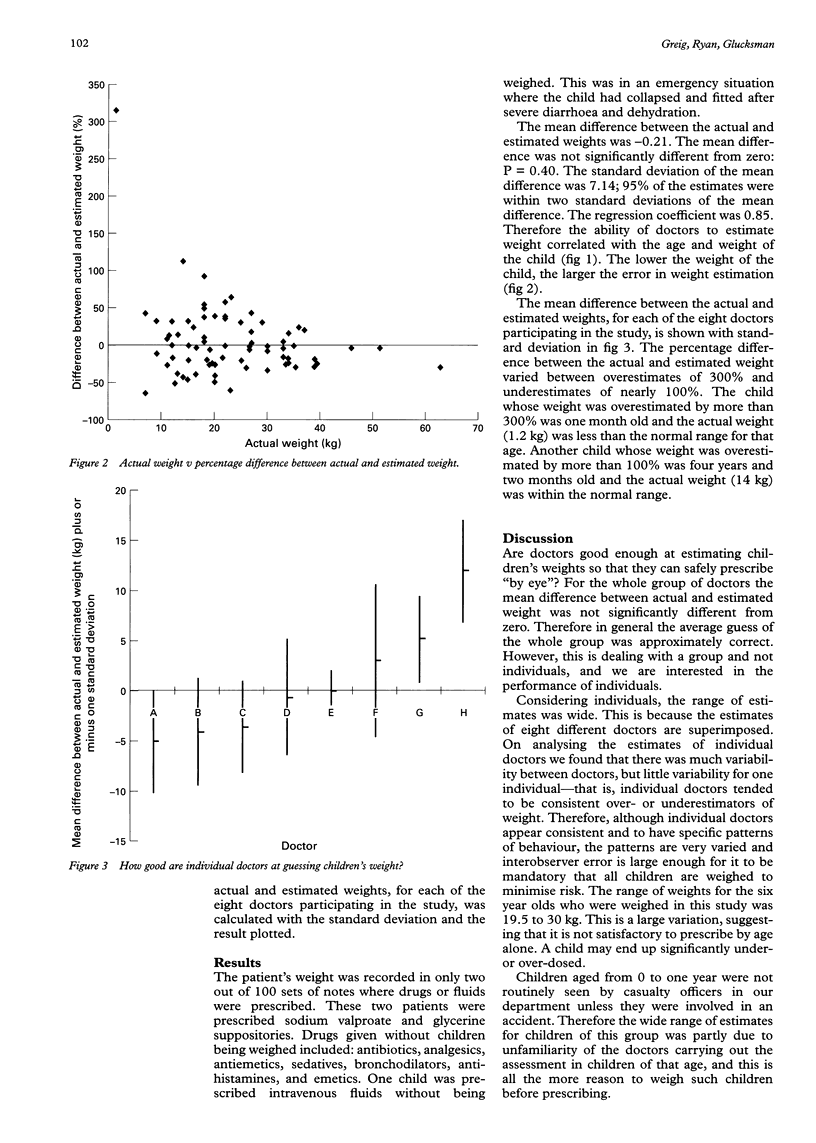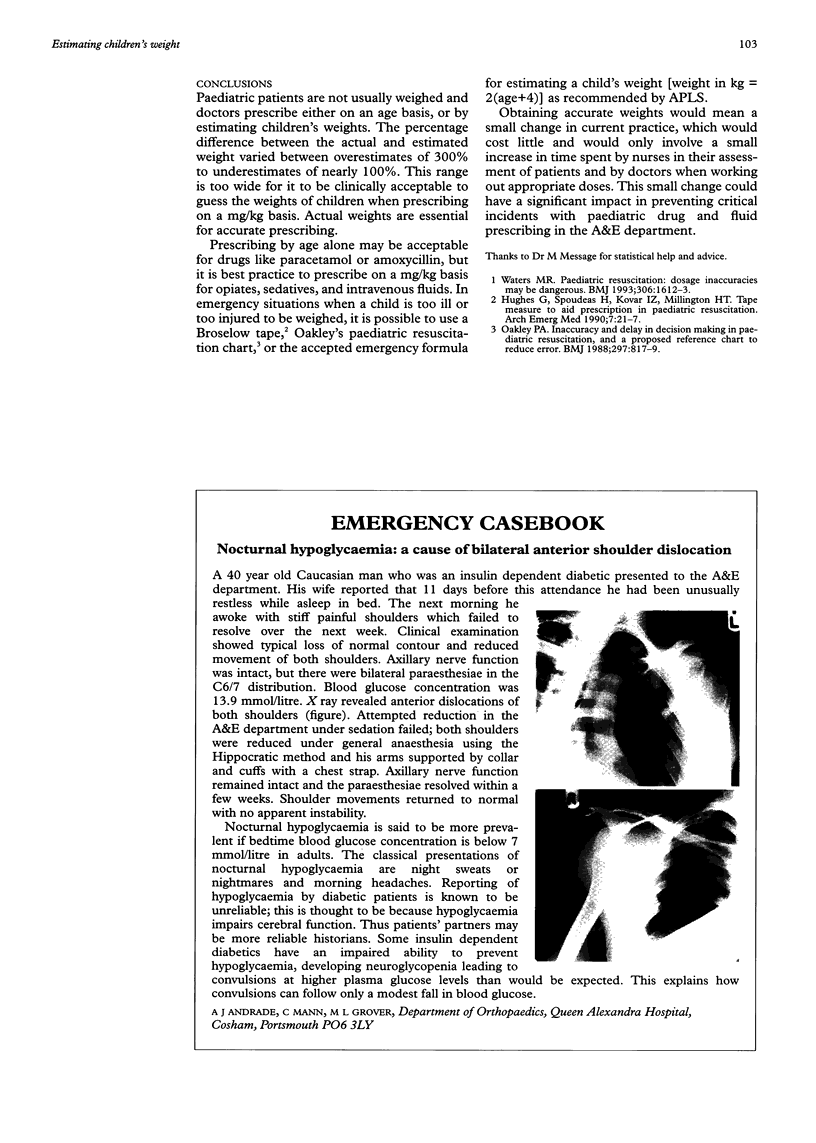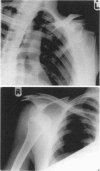Abstract
OBJECTIVE: (1) To see whether children are weighted before drugs are prescribed in an accident and emergency (A&E) department; (2) to assess how safe it is for doctors to guess children's weight if they prescribe "by eye". METHODS: An audit of 100 sets of notes was performed to see if children were weighed before drugs were prescribed. A&E senior house officers were asked to estimate the weight of 75 children aged 12 years and under. RESULTS: Children were weighed before prescribing in only two out of 100 cases. The mean difference between the actual and estimated weights was -0.21 (not significantly different from zero: P = 0.40); 95% of the estimates were within two standard deviations of the mean difference. The percentage difference between the actual and estimated weight varied between overestimates of 300% and underestimates of nearly 100%. CONCLUSIONS: The average guess of doctors as a group was approximately correct. However, there was a wide range of estimates for individuals. If the child's weight is guessed, the doctor could risk under- or overprescribing analgesia, sedation, or intravenous fluids. Given the wide range of estimates, actual weights are required for accurate prescribing. Prescribing on an age basis may be acceptable for drugs such as paracetamol or amoxycillin, but it is imperative to prescribe on a mg/kg basis for opiates, sedatives, and intravenous fluids because of the large variation in weight that can occur for a single age.
Full text
PDF


Images in this article
Selected References
These references are in PubMed. This may not be the complete list of references from this article.
- Hughes G., Spoudeas H., Kovar I. Z., Millington H. T. Tape measure to aid prescription in paediatric resuscitation. Arch Emerg Med. 1990 Mar;7(1):21–27. doi: 10.1136/emj.7.1.21. [DOI] [PMC free article] [PubMed] [Google Scholar]
- Oakley P. A. Inaccuracy and delay in decision making in paediatric resuscitation, and a proposed reference chart to reduce error. BMJ. 1988 Oct 1;297(6652):817–819. doi: 10.1136/bmj.297.6652.817. [DOI] [PMC free article] [PubMed] [Google Scholar]
- Waters M. R. Paediatric resuscitation. Dosage inaccuracies may be dangerous. BMJ. 1993 Jun 12;306(6892):1612–1613. doi: 10.1136/bmj.306.6892.1612-c. [DOI] [PMC free article] [PubMed] [Google Scholar]



